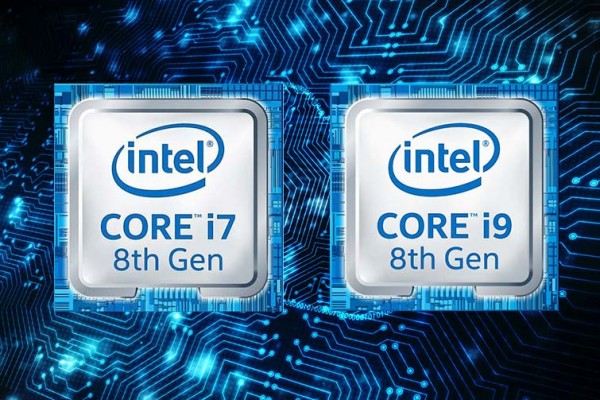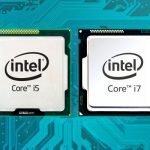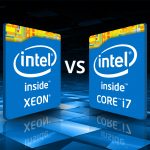Intel® Core™ i7 vs. i9
Intel Core i7 and Core i9 processors are the most advanced models in Intel’s long-evolving Core series of high-end computer central processing units (CPUs). Systems with Core i7 and i9 processors are typically more expensive than those with less powerful CPUs, but each chip brings advantages that are worth considering, depending on your needs.
Intel launched the Core i7, i5, and i3 processor lines between 2008 and 2010, and over time has sold millions of these powerful CPUs. Since then, the three processor families have seen significant cycle time and other advancements, thanks to Intel’s ongoing succession of die-shrinks and new processor microarchitectures (Skylake, Coffee Lake, etc.). The Core i9, introduced in 2017, added still more power to the line-up, boasting up to 18 cores and 36 threads — at the time, Intel’s highest-ever core and thread count of any PC processor.
Why consider Intel Core i7?
The Core i7 is Intel’s performance processor option, offering both raw speed and impressive multi-tasking capabilities. Core i7 processors are designed for users who need to do more than everyday home or office computing and basic computer gaming, for which Core i3 and i5 models will suffice. Typical buyers might use a Core i7-equipped system for creating 3D animation or VR environments.
The best Core i7 processors have up to six cores and 12 threads, giving them a leg-up on the quad-core counterparts found in the mainstream Core i5 line. In addition, the i7’s bigger on-chip cache allows it to keep more working data ready for processing. With a Core i7 CPU, you’ll be able to use multiple demanding applications simultaneously with minimal delays.
Why consider Intel Core i9?
The Core i9 is often called Intel’s processor line for “enthusiasts.” Released in 2017, the i9 has gained significant interest among users whose work demands require advanced computing capabilities – like editing 4K video, etc. – or whose entertainment pursuits – such as live-action, multi-player, VR-based computer games – can benefit from the ample power that a CPU with hyper-fast cycle times and high core-thread counts provides.
Behind the Core i9’s impressive performance is a new socket-motherboard combination and up to 18 cores and 36 threads. Not every PC user needs anything close to this level of multi-threading support, but for certain applications and games, the difference can be meaningful.
How can you tell which processor a brand system product has?
Key processor information can be found on laptop and desktop series pages, as well as within the tech specs section on each product page. On a Series overview page, you can read the bullet points beneath each product for details about available processors and other features, or you can use the filter option to view all systems that contain particular processors. When you’ve found something you like, follow the “Learn More” link for a more in-depth overview of the selected system.




